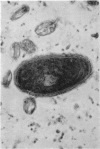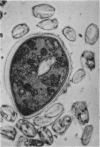Abstract
Ruminal ciliates have been grown in continuous culture in chemically defined media and in the absence of viable bacteria. Oligotrichic ruminal ciliates seem to require insoluble carbohydrates for growth; the holotrichic ciliates require soluble carbohydrates, but at low concentrations. Both groups of ciliates utilize amino acids as their principal nitrogen source when these are supplied in micromolar concentrations; at millimolar concentrations, amino acids are toxic, possibly from excessive ammonia formation arising from ciliate deaminase activity. Holotrichic ruminal ciliates are destroyed by overdeposition of amylopectin when glucose is present above 0.1% concentration in the medium. Ecological requirements of ruminal ciliates are also described.
Full text
PDF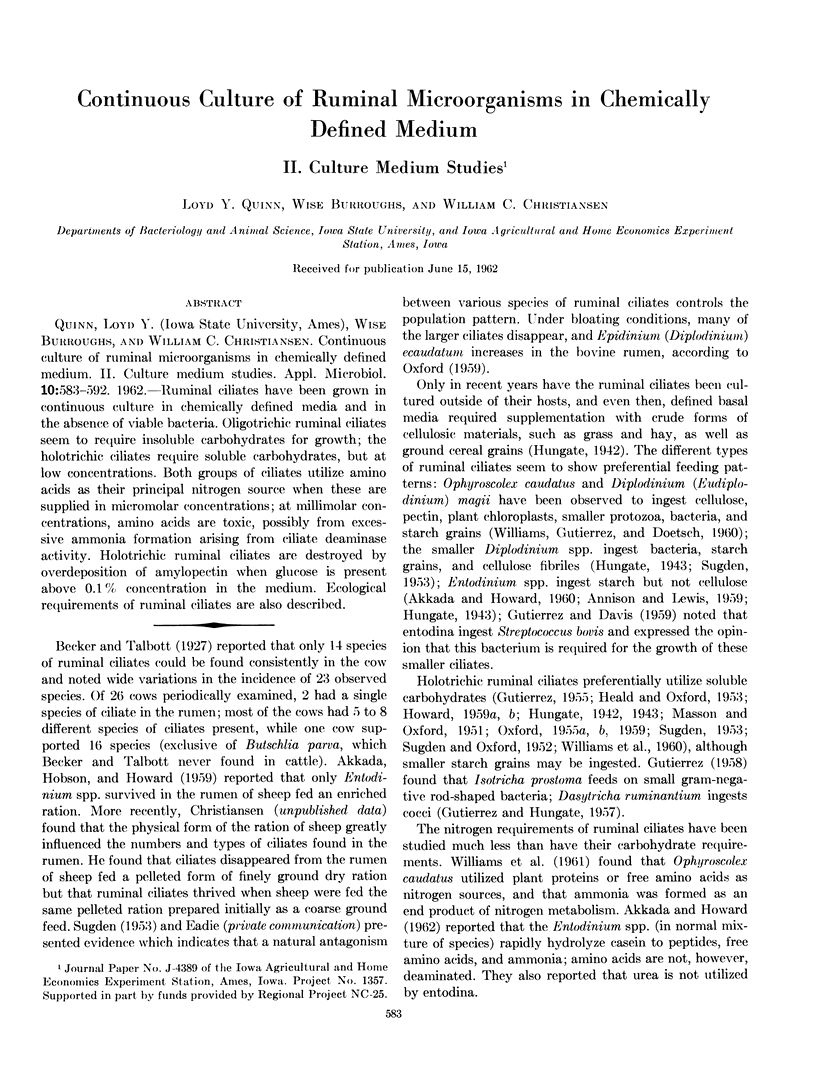
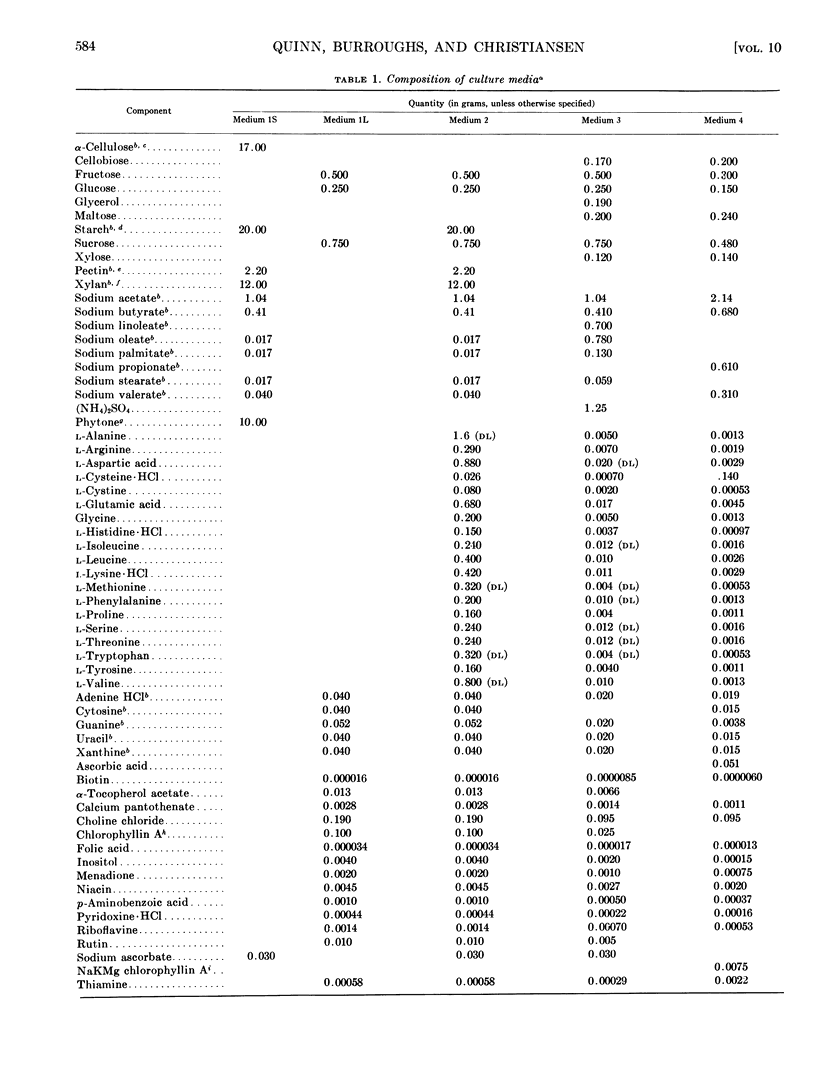
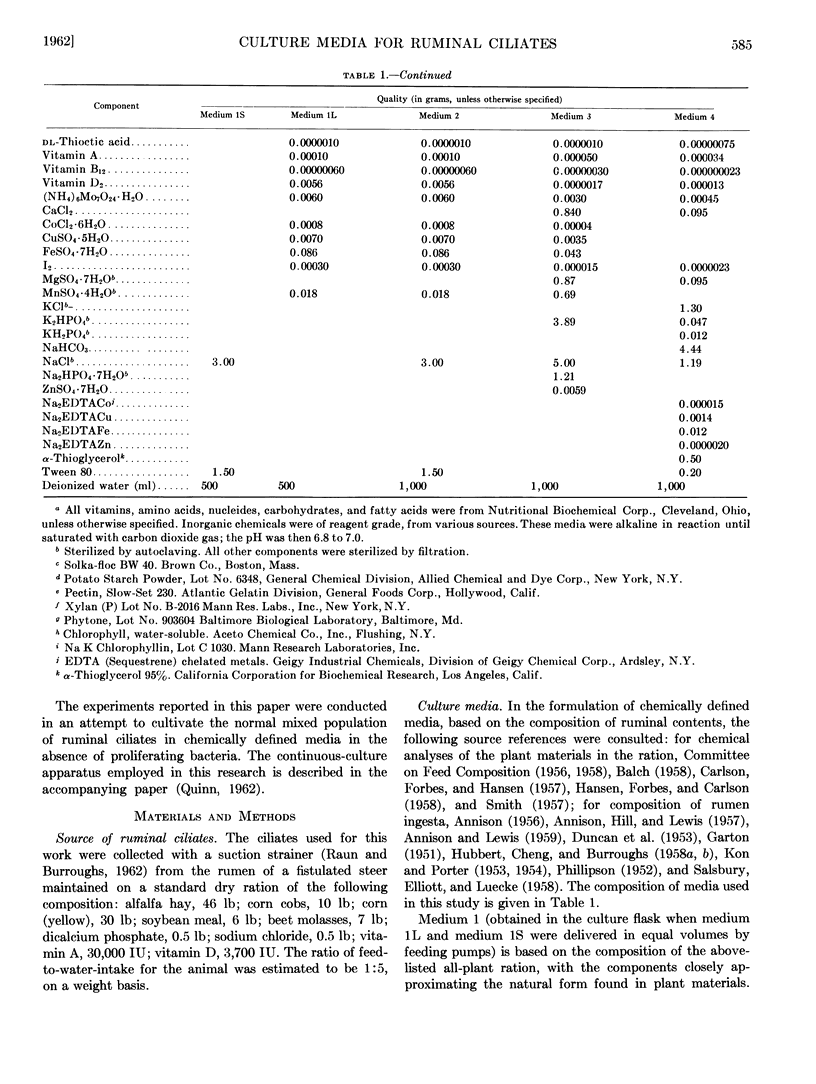
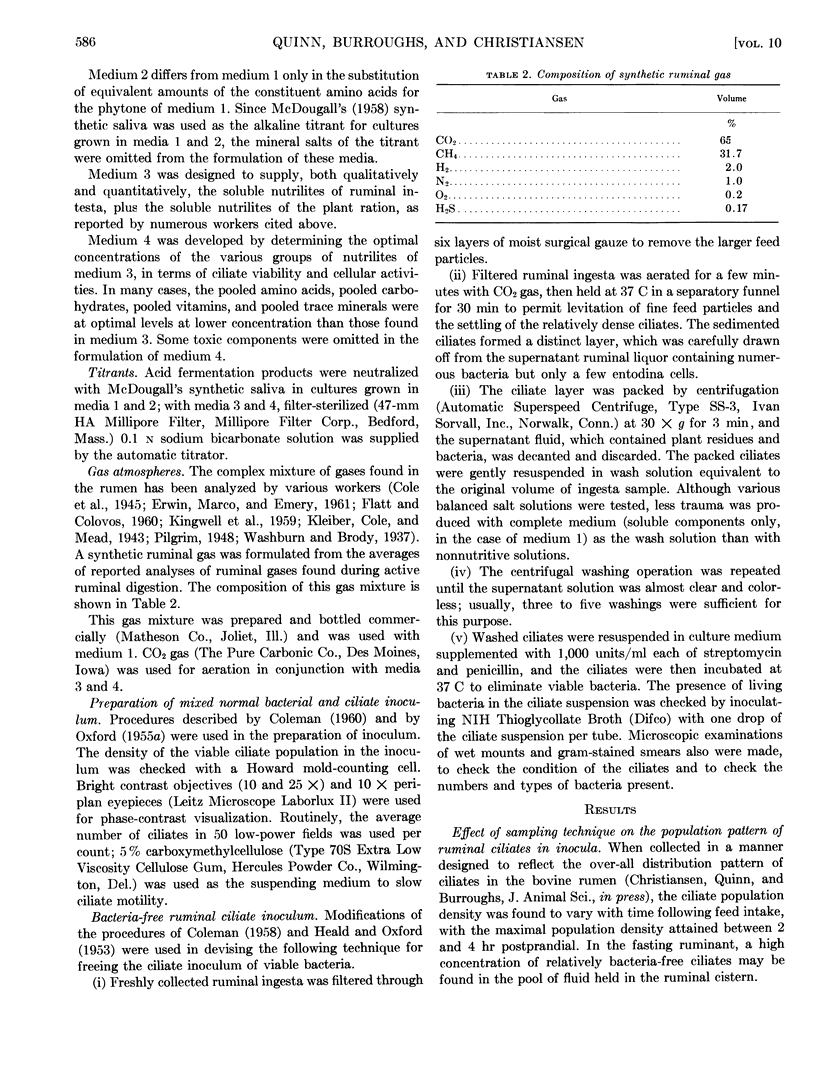
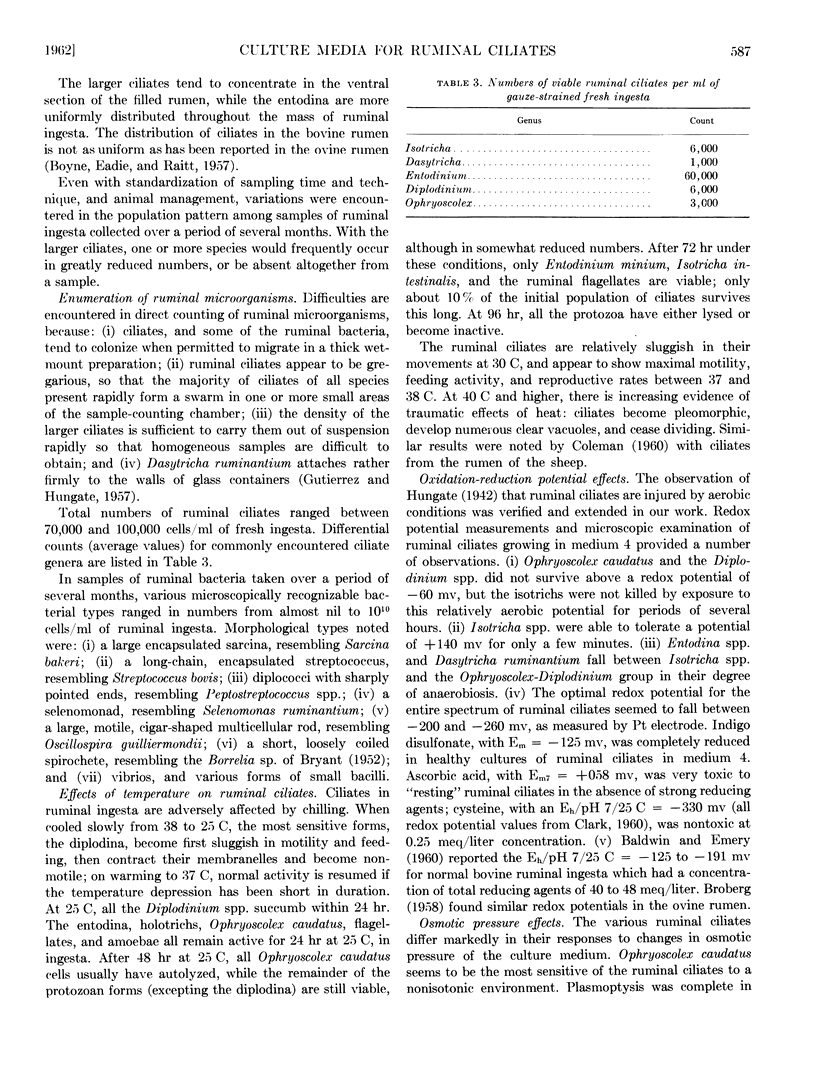
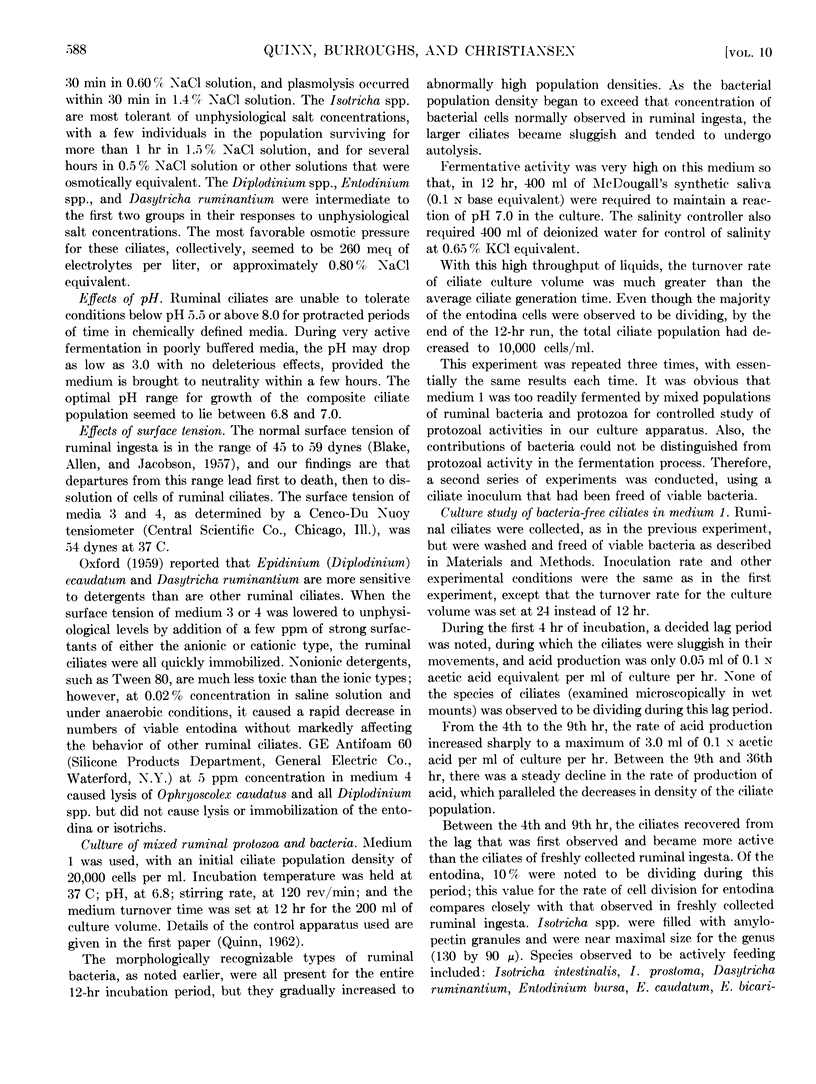
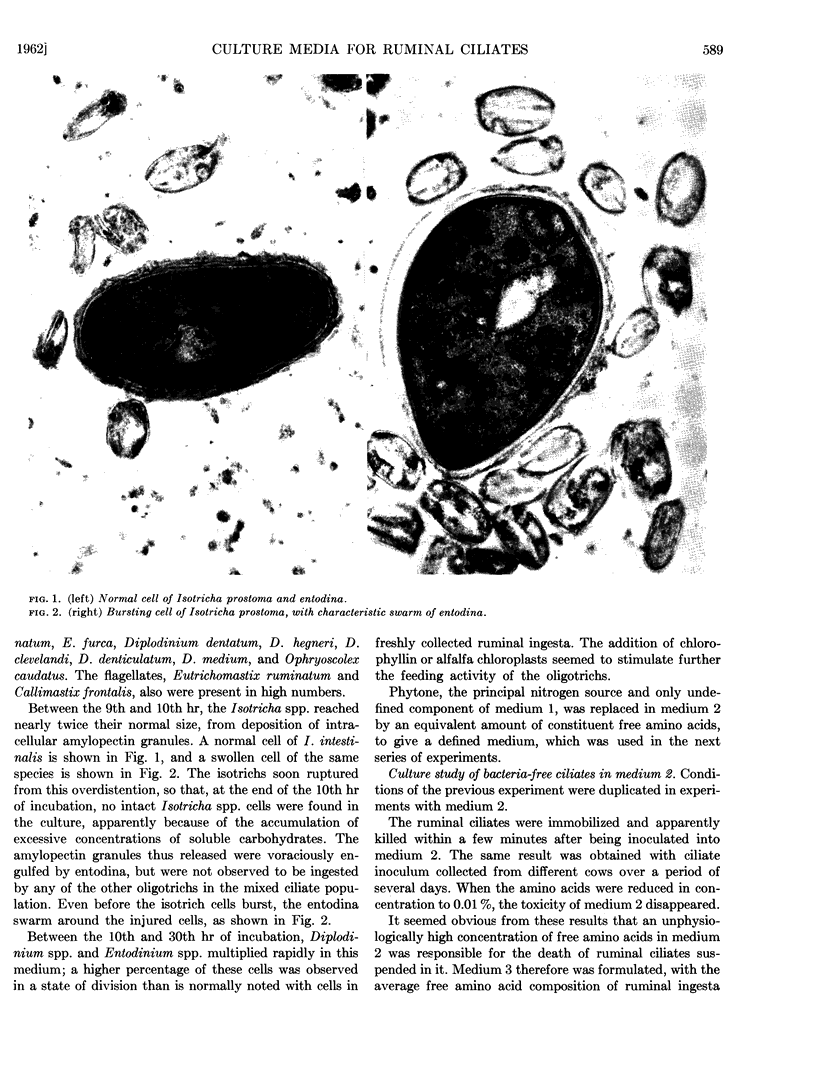
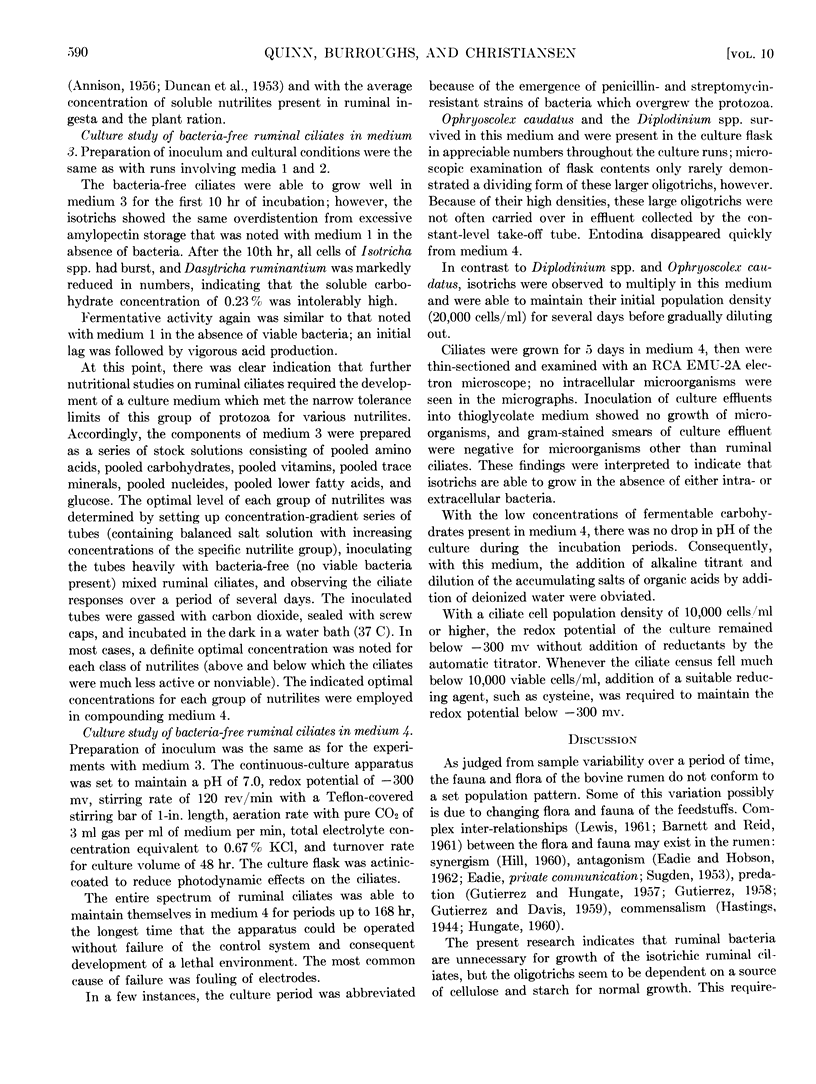
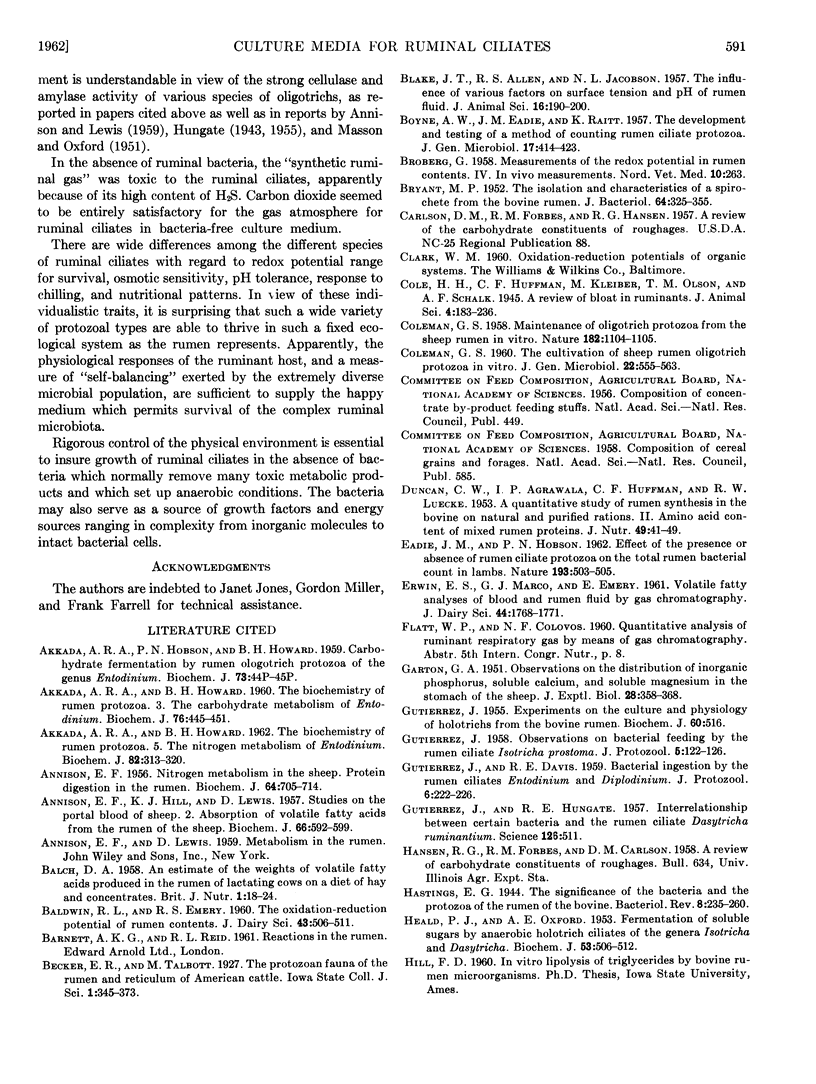
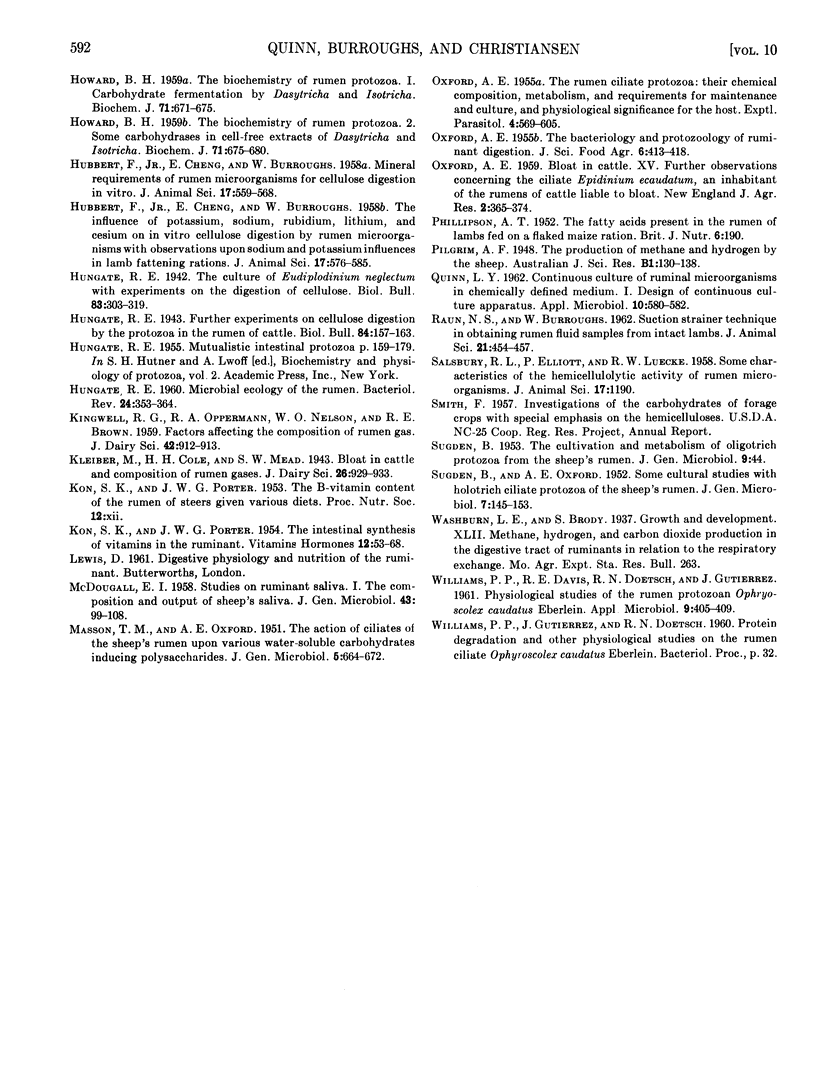
Images in this article
Selected References
These references are in PubMed. This may not be the complete list of references from this article.
- ABMU AKKADA A. R., HOWARD B. H. The biochemistry of rumen Protozoa, 3. The carbohydrate metabolism of Entodinium. Biochem J. 1960 Sep;76:445–451. doi: 10.1042/bj0760445. [DOI] [PMC free article] [PubMed] [Google Scholar]
- ABOU AKKADA A. R., HOWARD B. H. The biochemistry of rumen protozoa. 5. The nitrogen metabolism of Entodinium. Biochem J. 1962 Feb;82:313–320. doi: 10.1042/bj0820313. [DOI] [PMC free article] [PubMed] [Google Scholar]
- ANNISON E. F., HILL K. J., LEWIS D. Studies on the portal blood of sheep. II. Absorption of volatile fatty acids from the rumen of the sheep. Biochem J. 1957 Aug;66(4):592–599. doi: 10.1042/bj0660592. [DOI] [PMC free article] [PubMed] [Google Scholar]
- ANNISON E. F. Nitrogen metabolism in the sheep; protein digestion in the rumen. Biochem J. 1956 Dec;64(4):705–714. doi: 10.1042/bj0640705. [DOI] [PMC free article] [PubMed] [Google Scholar]
- BALCH D. A. An estimate of the weights of volatile fatty acids produced in the rumen of lactating cows on a diet of hay and concentrates. Br J Nutr. 1958;12(1):18–24. doi: 10.1079/bjn19580005. [DOI] [PubMed] [Google Scholar]
- BOYNE A. W., EADIE J. M., RAITT K. The development and testing of a method of counting rumen ciliate protozoa. J Gen Microbiol. 1957 Oct;17(2):414–423. doi: 10.1099/00221287-17-2-414. [DOI] [PubMed] [Google Scholar]
- BRYANT M. P. The isolation and characteristics of a spirochete from the bovine rumen. J Bacteriol. 1952 Sep;64(3):325–335. doi: 10.1128/jb.64.3.325-335.1952. [DOI] [PMC free article] [PubMed] [Google Scholar]
- COLEMAN G. S. Maintenance of oligotrich protozoa from the sheep rumen in vitro. Nature. 1958 Oct 18;182(4642):1104–1105. doi: 10.1038/1821104a0. [DOI] [PubMed] [Google Scholar]
- COLEMAN G. S. The cultivation of sheep rumen oligotrich protozoa in vitro. J Gen Microbiol. 1960 Apr;22:555–563. doi: 10.1099/00221287-22-2-555. [DOI] [PubMed] [Google Scholar]
- DUNCAN C. W., AGRAWALA I. P., HUFMAN C. F., LUECKE R. W. A quantitative study of rumen synthesis in the bovine on natural and purified rations. II. Amino acid content of mixed rumen proteins. J Nutr. 1953 Jan 10;49(1):41–49. doi: 10.1093/jn/49.1.41. [DOI] [PubMed] [Google Scholar]
- EADIE J. M., HOBSON P. N. Effect of the presence or absence of rumen ciliate protozoa on the total rumen bacterial count in lambs. Nature. 1962 Feb 3;193:503–505. doi: 10.1038/193503a0. [DOI] [PubMed] [Google Scholar]
- GUTIERREZ J. Experiments on the culture and physiology of holotriches from the bovine rumen. Biochem J. 1955 Jul;60(3):516–522. doi: 10.1042/bj0600516. [DOI] [PMC free article] [PubMed] [Google Scholar]
- GUTIERREZ J., HUNGATE R. E. Interrelationship between certain bacteria and the rumen ciliate Dasytricha ruminantium. Science. 1957 Sep 13;126(3272):511–511. doi: 10.1126/science.126.3272.511. [DOI] [PubMed] [Google Scholar]
- HEALD P. J., OXFORD A. E. Fermentation of soluble sugars by anaerobic holotrich ciliate protozoa of the genera Isotricha and Dasytricha. Biochem J. 1953 Feb;53(3):506–512. doi: 10.1042/bj0530506. [DOI] [PMC free article] [PubMed] [Google Scholar]
- HOWARD B. H. The biochemistry of rumen protozoa. 1. Carbohydrate fermentation by Dasytricha and Isotricha. Biochem J. 1959 Apr;71(4):671–675. doi: 10.1042/bj0710671. [DOI] [PMC free article] [PubMed] [Google Scholar]
- HOWARD B. H. The biochemistry of rumen protozoa. 2. Some carbohydrases in cell-free extracts of Dasytricha and Isotricha. Biochem J. 1959 Apr;71(4):675–680. doi: 10.1042/bj0710675. [DOI] [PMC free article] [PubMed] [Google Scholar]
- HUNGATE R. E. Symposium: selected topics in microbial ecology. I. Microbial ecology of the rumen. Bacteriol Rev. 1960 Dec;24(4):353–364. doi: 10.1128/br.24.4.353-364.1960. [DOI] [PMC free article] [PubMed] [Google Scholar]
- Hastings E. G. THE SIGNIFICANCE OF THE BACTERIA AND THE PROTOZOA OF THE RUMEN OF THE BOVINE . Bacteriol Rev. 1944 Dec;8(4):235–254. doi: 10.1128/br.8.4.235-254.1944. [DOI] [PMC free article] [PubMed] [Google Scholar]
- KON S. K., PORTER J. W. The intestinal synthesis of vitamins in the ruminant. Vitam Horm. 1954;12:53–68. doi: 10.1016/s0083-6729(08)61008-0. [DOI] [PubMed] [Google Scholar]
- MASSON F. M., OXFORD A. E. The action of the ciliates of the sheep's rumen upon various water-soluble carbohydrates, including polysaccharides. J Gen Microbiol. 1951 Oct;5(4):664–672. doi: 10.1099/00221287-5-4-664. [DOI] [PubMed] [Google Scholar]
- OXFORD A. E. The rumen ciliate protozoa: their chemical composition, metabolism, requirements for maintenance and culture, and physiological significance for the host. Exp Parasitol. 1955 Nov;4(6):569–605. doi: 10.1016/0014-4894(55)90045-x. [DOI] [PubMed] [Google Scholar]
- PHILLIPSON A. T. The fatty acids present in the rumen of lambs fed on a flaked maize ration. Br J Nutr. 1952;6(2):190–198. doi: 10.1079/bjn19520019. [DOI] [PubMed] [Google Scholar]
- QUINN L. Y. Continuous culture of ruminal microorganisms in chemically defined medium. I. Design of continuous-culture apparatus. Appl Microbiol. 1962 Nov;10:580–582. doi: 10.1128/am.10.6.580-582.1962. [DOI] [PMC free article] [PubMed] [Google Scholar]
- RAWLINSON W. A., GOULD M. K. Biochemical adaptation as a response to exercise. 2. Adenosine triphosphatase and creatine phosphokinase activity in muscles of exercised rats. Biochem J. 1959 Sep;73:44–48. doi: 10.1042/bj0730044. [DOI] [PMC free article] [PubMed] [Google Scholar]
- SUGDEN B., OXFORD A. E. Some cultural studies with holotrich ciliate protozoa of the sheep's rumen. J Gen Microbiol. 1952 Aug;7(1-2):145–153. doi: 10.1099/00221287-7-1-2-145. [DOI] [PubMed] [Google Scholar]
- SUGDEN B. The cultivation and metabolism of oligotrich Protozoa from the sheep's rumen. J Gen Microbiol. 1953 Aug;9(1):44–53. doi: 10.1099/00221287-9-1-44. [DOI] [PubMed] [Google Scholar]
- WILLIAMS P. P., DAVIS R. E., DOETSCH R. N., GUTIERREZ J. Physiological studies of the rumen protozoan Ophryoscolex caudatus Eberlein. Appl Microbiol. 1961 Sep;9:405–409. doi: 10.1128/am.9.5.405-409.1961. [DOI] [PMC free article] [PubMed] [Google Scholar]



